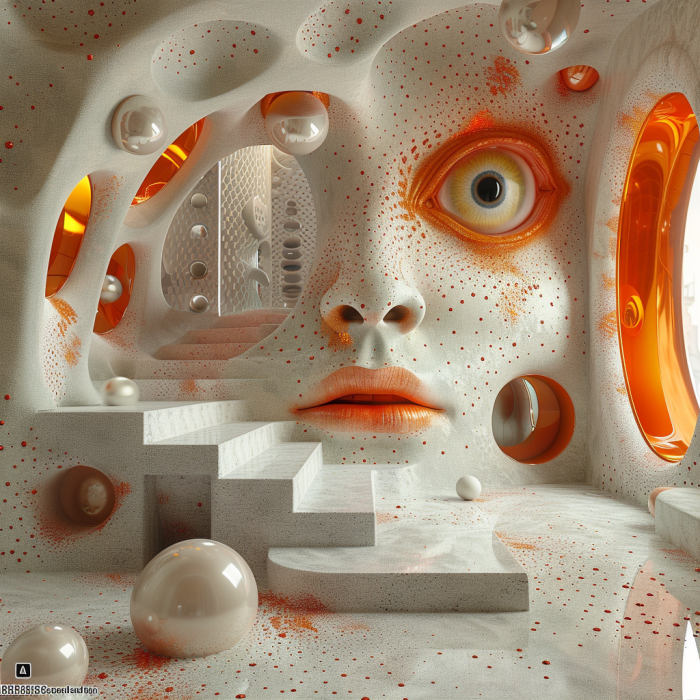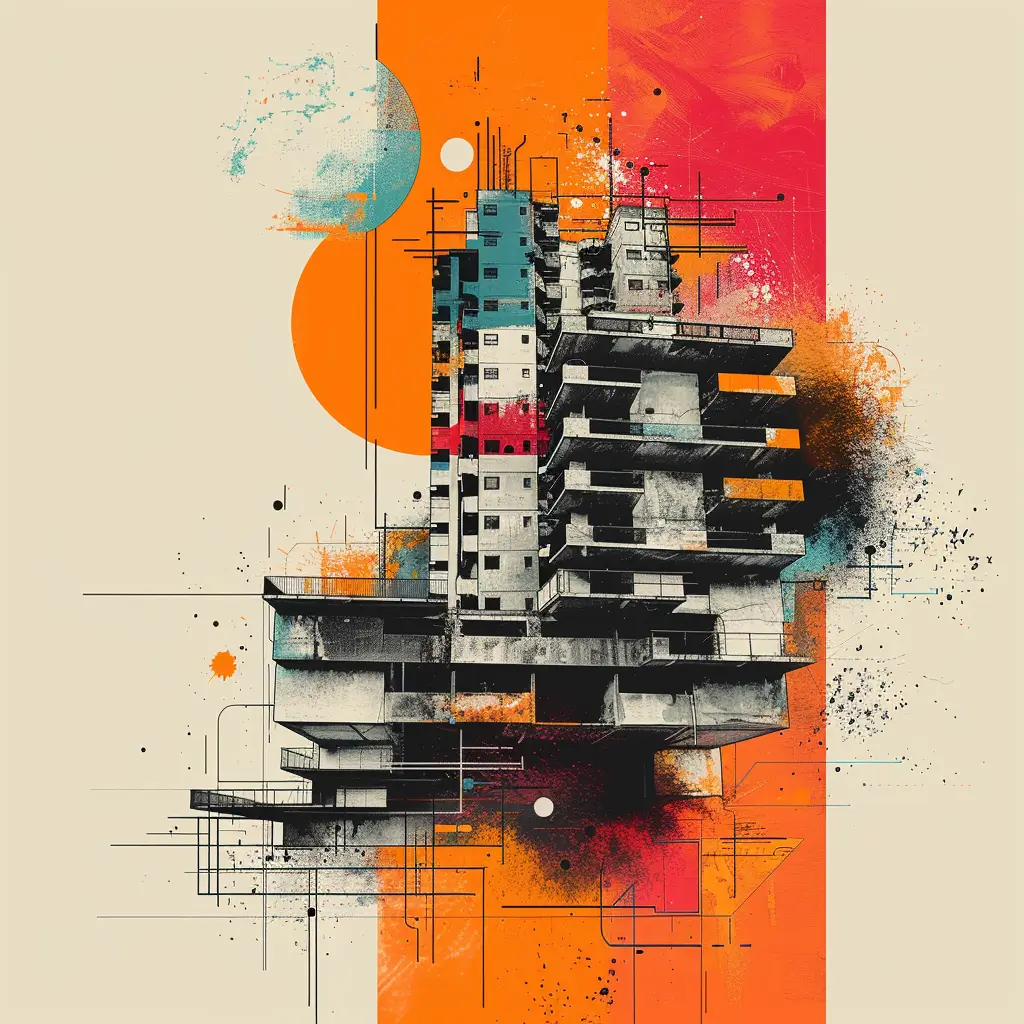
Low Poly Graphics: Unveiling the Art of Geometric Simplicity
In the realm of digital design, low poly graphics have emerged as a captivating and visually distinctive art form. With their clean lines, minimalist aesthetic, and geometric simplicity, they have become increasingly popular across various creative fields. In this article, we will explore the essence of low poly graphics, delve into their characteristics, applications, and the reasons behind their enduring appeal.
Low poly graphics have become a powerful visual tool in the realm of digital design, offering a unique aesthetic and versatile applications. With their clean lines, geometric simplicity, and minimalist approach, low poly graphics have gained popularity across various industries. In this article, we will explore the diverse applications of low poly and uncover the creative possibilities they unlock.
Contents
What is Low Poly Graphics?
Low poly graphics, also known as low polygon art refer to a style of digital art and design that employs a limited number of polygons to create 3D models. Unlike high-resolution and highly detailed 3D designs, low poly designs embrace simplicity by utilizing a reduced polygon count. This deliberate reduction in complexity results in a distinct visual style characterized by bold shapes, clean lines, and faceted surfaces.
The term “low poly” itself refers to the low number of polygons used to create these graphics. Polygons are the building blocks of 3D models and are typically triangular in shape. By reducing the number of polygons, artists and designers create a simplified representation of objects, environments, or characters.
The Origins of Low Poly Graphics
To truly appreciate the impact and significance of low poly graphics, it is important to understand their historical context and evolution. While the term “low poly” may be relatively new, the foundations of this style can be traced back to the early days of computer-generated imagery (CGI).
In the early stages of digital art and design, the limitations of technology necessitated working with simplified forms and structures. Artists and designers had to find creative ways to convey objects and environments with limited resources. This led to the development of techniques that focused on reducing polygon counts while still achieving recognizable representations.
As technology advanced, the ability to create highly detailed and realistic 3D models became more accessible. However, amidst the pursuit of hyper-realism, a countercultural movement emerged, embracing the beauty of simplicity and minimalism. This movement sought to capture the essence of objects and environments using minimalistic polygonal representations, giving rise to the resurgence of low poly design.
Characteristics of Low Poly Graphics
The Beauty of Geometric Simplicity
At the heart of low poly graphics lies the beauty of geometric simplicity. The deliberate use of basic shapes, such as triangles, squares, and polygons, creates a visually striking aesthetic that captures the essence of objects and environments with minimalistic forms. By reducing complexity, low poly design evoke a sense of clarity, allowing viewers to appreciate the underlying structure and design elements.
Clean Lines and Bold Shapes
Low poly graphics are characterized by clean lines and bold shapes. The edges of each polygon are typically sharp and well-defined, emphasizing the geometry of the design. This crispness adds to the overall visual impact, creating a sense of precision and order. The deliberate use of bold shapes enhances the recognition and memorability of the artwork, making it visually distinct and easily identifiable.
Faceted Surfaces and Stylized Textures
One of the defining features of low poly design is the use of faceted surfaces. Instead of smooth, continuous surfaces, low poly designs feature flat planes created by the arrangement of polygons. These faceted surfaces contribute to the stylized and abstract nature of the artwork, adding visual interest and depth. Additionally, artists often employ stylized textures to further enhance the overall aesthetic, adding detail and visual richness to the design.
Limited Color Palette
Low poly graphics often embrace a limited color palette to maintain simplicity and coherence. The use of a restrained color scheme enhances the visual impact of the design, allowing the geometric shapes and forms to take center stage. Artists carefully select colors that complement each other and create a harmonious composition. The absence of intricate color gradients or complex shading techniques accentuates the graphic quality of the artwork.
Minimalist Approach to Detail
While low poly graphics can be visually captivating, they maintain a minimalist approach to detail. Artists aim to convey objects and environments with the fewest polygons necessary, stripping away unnecessary complexity. This intentional reduction of detail allows viewers to focus on the core elements of the design, highlighting the essential features and creating a sense of abstraction. By simplifying the representation, low poly designs achieve a balance between recognizable forms and artistic interpretation.
Versatility and Adaptability
Very incredibly versatile and can be adapted to various design styles and applications. From video games and animation to branding and illustration, low poly find their place in a wide range of creative projects. Their simplicity and distinct visual style make them suitable for both digital and print media, allowing artists and designers to explore different avenues of expression.
Accessibility and Performance Efficiency
Another notable characteristic is their accessibility and performance efficiency. Due to the reduced polygon count and simplified nature of the designs, low poly require less computational power to render and display. This accessibility makes them accessible on a variety of devices, including mobile phones and older hardware. Furthermore, low poly can be easily transmitted over the internet with reduced file sizes, ensuring efficient distribution and sharing.
Expressing Creativity through Constraints
Exemplifying the notion of creativity within constraints. By working with a limited number of polygons, artists and designers are challenged to make deliberate choices and find innovative solutions to capture the essence of their subjects. The constraints imposed by the low poly style foster creative thinking and encourage the exploration of alternative design approaches.
Evoking Nostalgia and Retro Vibes
The aesthetic qualities often evoke a sense of nostalgia, reminiscent of early video games and computer-generated imagery. The angular forms, pixelated textures, and simplified environments tap into the collective memory of gamers and digital enthusiasts. This nostalgia-driven appeal resonates with both the younger generation, experiencing a revival of retro aesthetics, and the older audience, recalling the early days of digital art and design.
Low poly, with their geometric simplicity, clean lines, and bold shapes, have carved a distinct place in the world of digital design. Their minimalist approach to detail, limited color palettes, and faceted surfaces contribute to their unique and visually striking aesthetic. Beyond their visual appeal, low poly offer versatility, accessibility, and the opportunity for creative expression within constraints.
As the world of design continues to evolve, low poly maintain their allure and inspire artists and designers to explore new possibilities. Whether in video games, animation, branding, or illustrations, low poly graphics providing a visually captivating and memorable experience. By embracing geometric simplicity, low poly graphics illuminate the power of minimalism in the realm of digital art and design.
Applications of Low Poly Graphics: Unleashing Creative Possibilities
Low poly games: Gaming and Virtual Environments
One of the primary domains where low poly graphics excel is in the realm of gaming and virtual environments. The inherent simplicity of low poly designs allows for efficient rendering and optimization, making them ideal for real-time applications. Low poly graphics can be found in a wide range of games, from indie titles to AAA productions, creating visually appealing and immersive virtual worlds. The geometric simplicity of low poly games models not only contributes to performance optimization but also offers a distinct art style that enhances the overall gaming experience.
Animation and Motion Graphics
Low poly graphics are also widely employed in the field of animation and motion graphics. Their clean lines and geometric forms lend themselves well to creating dynamic and visually compelling motion sequences. Low poly characters and environments can be animated smoothly, allowing for fluid movements and expressive gestures. This makes low poly graphics an excellent choice for commercials, explainer videos, and short animated films where the focus is on conveying the message concisely and stylishly.
Illustration and Artistic Expression
The unique aesthetic of low poly graphics has found its way into the realm of illustration and artistic expression. Artists and designers are drawn to the clean lines and minimalist approach that low poly graphics offer, allowing them to create visually striking and thought-provoking artworks. Low poly illustrations often evoke a sense of simplicity and abstractness while still conveying depth and meaning. They can be found in digital paintings, prints, posters, and other forms of visual art.
Architectural Visualization
Low poly graphics are increasingly being utilized in the field of architectural visualization. Architects and designers employ low poly models to showcase their designs in a visually appealing and accessible manner. By simplifying complex architectural structures into geometric forms, low poly graphics provide a clear representation of spatial relationships and design concepts. They are particularly useful in early design stages, allowing clients and stakeholders to grasp the essence of a project before its full development.
Product Design and Prototyping
Low poly graphics are also valuable in the realm of product design and prototyping. By creating low poly models of products, designers can visualize and iterate on their designs quickly. Low poly graphics offer a simplified representation of objects, enabling designers to focus on key features and proportions. This allows for efficient communication and collaboration between design teams, clients, and manufacturers. Additionally, low poly models can be 3D printed or used as a basis for more detailed and refined prototypes.
Educational Tools and Infographics
The simplicity and clarity of low poly graphics make them ideal for creating educational tools and infographics. By using low poly visuals, complex concepts and data can be presented in a visually engaging and easily understandable manner. Whether it’s explaining scientific principles, illustrating historical events, or visualizing statistical information, low poly graphics offer an intuitive and accessible approach to communication. Their clean lines and distinct shapes help simplify complex information, making it more digestible for a broader audience.
Advertising and Branding
Low poly graphics have also made their mark in the world of advertising and branding. The unique and eye-catching aesthetic of low poly designs allows companies to create memorable brand identities and marketing campaigns. By utilizing low poly graphics in advertisements, logos, and promotional materials, businesses can stand out from the competition and capture the attention of their target audience. The geometric simplicity and bold shapes of low poly graphics help create a modern and visually distinctive brand image.
Virtual Reality (VR) and Augmented Reality (AR)
As virtual reality (VR) and augmented reality (AR) technologies continue to evolve, low poly graphics have found a natural home in these immersive experiences. The optimized nature of low poly designs allows for smooth and efficient rendering in real-time VR and AR environments. Low poly graphics can be used to create virtual worlds, interactive experiences, and engaging AR applications. From architectural walkthroughs to virtual training simulations, low poly graphics enhance the sense of immersion and provide a visually compelling experience.
Web and User Interface (UI) Design
The minimalist and visually appealing nature of low poly graphics has also found its place in web design and user interface (UI) design. Web designers utilize low poly elements, backgrounds, and icons to create visually engaging and modern websites. The geometric simplicity of low poly graphics can help guide users’ attention and create a cohesive and visually pleasing user interface. Whether it’s a subtle low poly texture or a prominent graphic element, these designs contribute to an aesthetically pleasing and user-friendly online experience.
Conclusion
Low poly graphics offer a wide range of applications and creative possibilities across various industries. From gaming and animation to illustration and product design, their minimalist aesthetic and geometric simplicity make them visually captivating and versatile. Whether it’s creating immersive virtual worlds, communicating complex information, or building memorable brand identities, low poly graphics continue to leave a lasting impression.
As the digital landscape evolves, low poly graphics remain apowerful tool for designers and artists seeking to convey ideas with simplicity and style. Their clean lines, bold shapes, and limited polygon count provide a distinct visual language that captures attention and engages viewers. By embracing the features of low poly graphics, creators can unlock new avenues for creative expression and captivate audiences across various mediums.
So, whether you’re a game developer, an architect, an illustrator, a marketer, or a web designer, consider exploring the world of low poly graphics and discovering the endless possibilities they offer. Embrace the geometric simplicity, unleash your creativity, and create visually stunning experiences that leave a lasting impact. Low poly graphics are here to transform your designs and redefine the boundaries of visual communication.





1 Comment
Great and helpful content. Thanks a lot! ⚡️